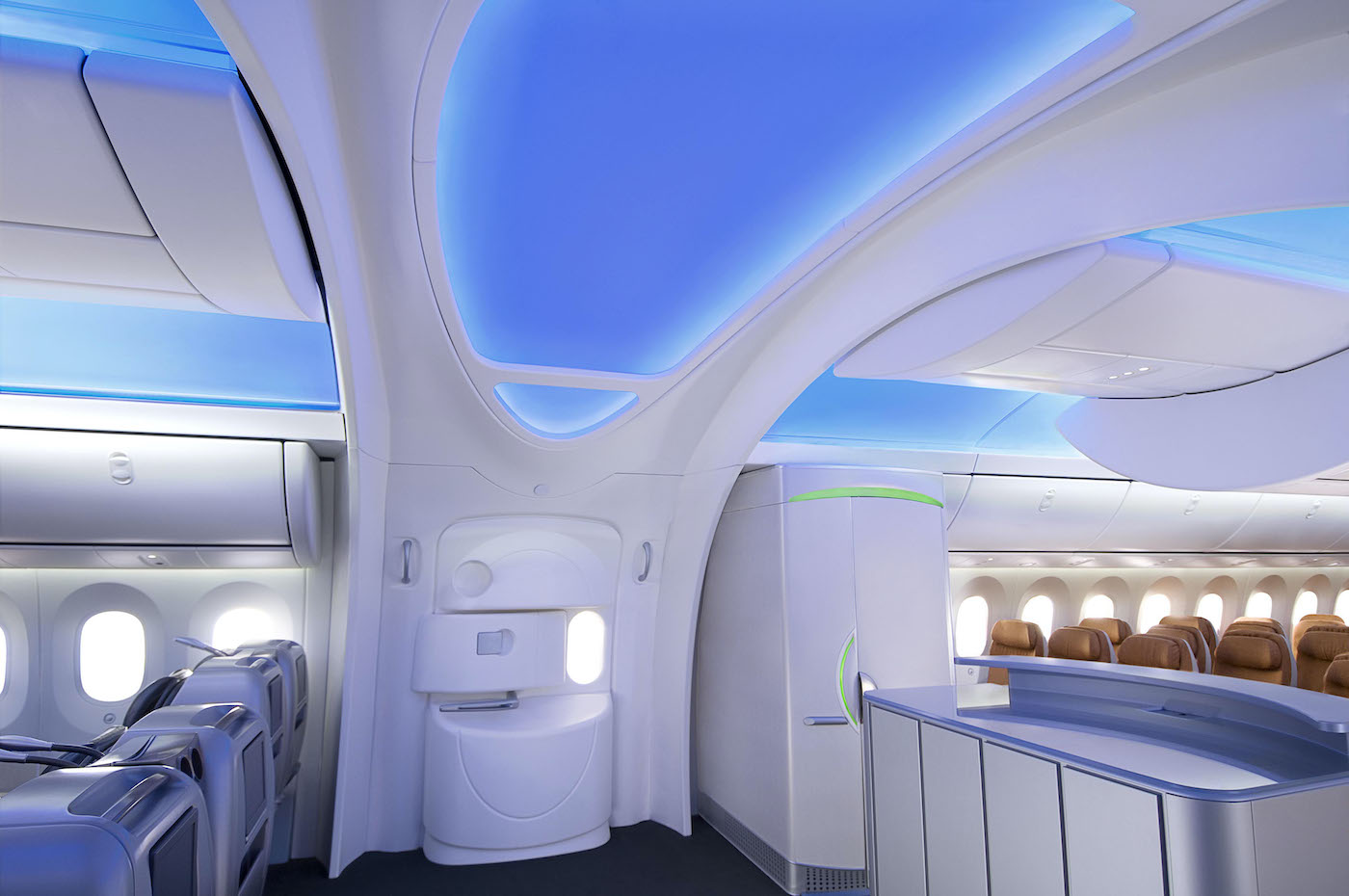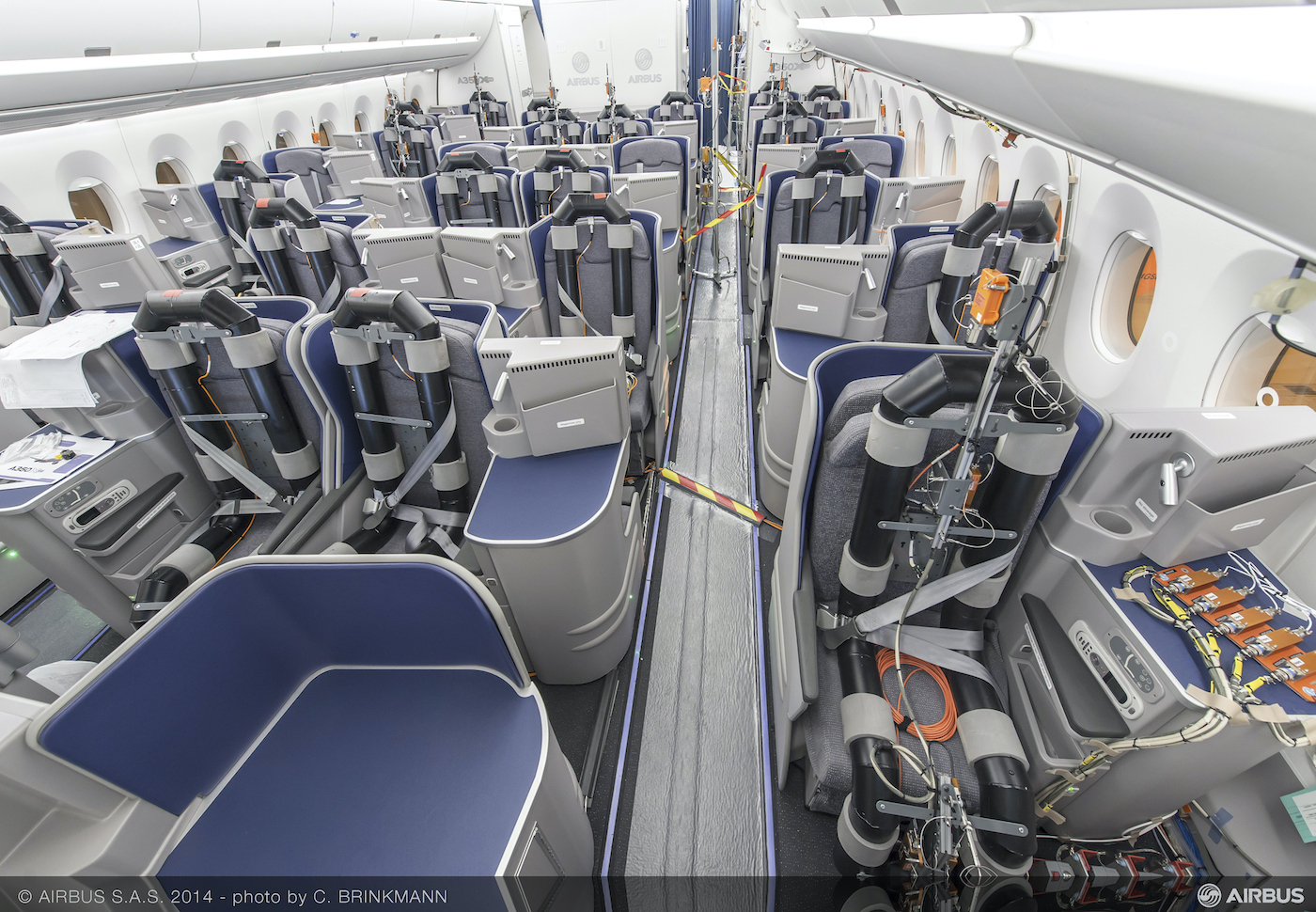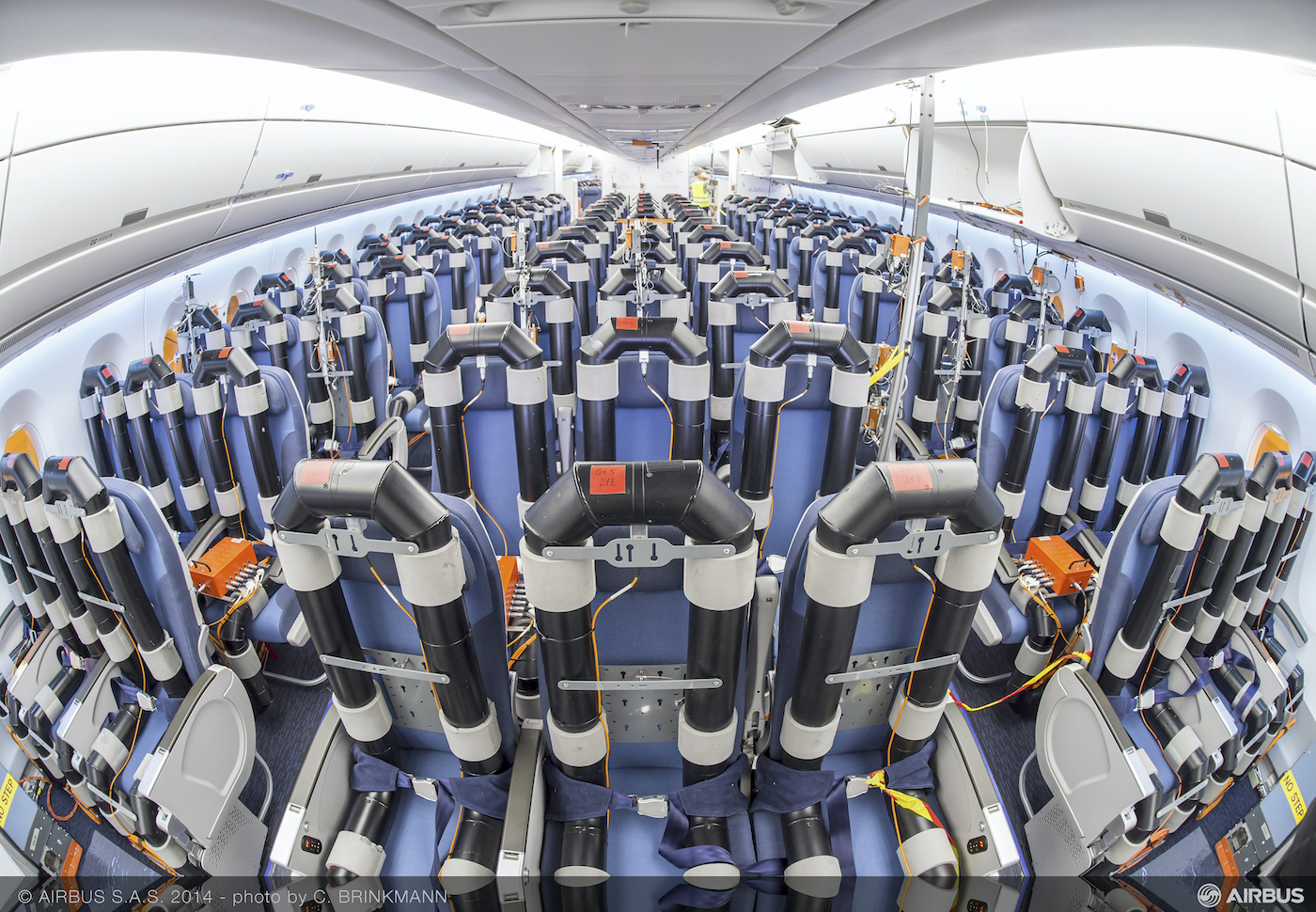Aviation has made progress in addressing common cabin environment complaints and improving passengers’ well-being in flight, but there is still room for improvement, especially when it comes to cabin air quality. Much has been discussed about the safety of aircraft cabins in terms of the transmission of viruses in the air, given Covid-19 concerns, but let’s look beyond…
According to Dr Craig Lawson, a lecturer in airframe systems design at Cranfield University’s Centre for Aeronautics in the UK, the greatest negative effect placed on passengers’ bodies stems from cabin pressurisation and corresponding oxygen levels.
“Passenger health and well-being is affected by the condition of the atmosphere in the cabin, and this is determined by the design of the cabin and air-conditioning systems, also known as the Environmental Control System (ECS). There are two main factors here,” he explains. “The level of oxygen present in the cabin is about three-quarters of that found in the atmosphere at sea level, since a typical cabin altitude is about 7,500ft. The reduction in oxygen density causes fatigue on long-haul flights.”
The ideal environment would perhaps be to have cabin pressure equal to that on the ground, but, as Lawson points out, basic physics make this very difficult and prohibitively costly, if not impossible.
He explains that having cabin pressure equivalent to that at sea level would increase the pressure difference between the inside and the outside of the fuselage, since at cruising altitude the atmospheric pressure is only one-quarter that of sea level pressure. “This means the fuselage needs to be stronger and heavier, detracting from aircraft performance,” he says. “The increased use of composite material, such as carbon fibre in place of traditional aluminium alloys, makes it possible to make a stronger and lighter aircraft structure.”
Lawson credits airframe manufacturers with making great progress in lowering the cabin altitude on the latest airliners – the B787 and the A350 – where cabin altitude is about 5,500ft, reducing passenger fatigue on long-haul flights.
Blake Emery, director of differentiation strategy at Boeing, adds that the manufacturer tested the effects of pressure on the body at specially designed pressurised chambers at Oklahoma State University in the USA, with Boeing physicians present to evaluate the physical effects of the environment on test participants at different altitudes.
Dry air
Replacing aluminium alloy parts with composites, Lawson tells us, also helps address the second key contributing factor to passenger health and well-being in flight: reduced humidity.
“The air at cruising altitude is almost completely dry [0% relative humidity]. We would ideally have a humidity of around 35% for comfort,” Lawson says. “The ECS typically provides a humidity of about 10% on an airliner, and this is naturally raised by passenger exhalation. However, the ECS dries the air to prevent condensation-causing corrosion and interference with electrics. Composite materials are not susceptible to corrosion, and so the A350 and B787, with their greater use of composites, promise higher humidity of 15-20%.”
Emery adds that when Boeing carried out studies on humidity levels and air filtration for the B787, at the specialised facilities of DTU Technical University in Denmark, a Boeing physician was present to measure how changes in these cabin conditions affected the body.

“You have to put people in the condition and then you take measures at various time intervals,” he says. “These measures are a combination of self-reporting, meaning the participant has a questionnaire to fill out about how he or she is feeling. We also take pretty sophisticated physiological measures at regular intervals, including heart rate, blood pressure and even the viscosity of tears, which helps understand eye dryness, membrane dryness, etc.”
Beyond discomfort, Lawson says, low humidity can also make passengers more susceptible to disease. “On long-haul flights, passengers’ respiratory systems dry out,” he says. “The mucous membrane in your respiratory system guards you against viruses such as the common cold, and hence you are more susceptible to catching a cold on a long-haul flight because of the dry air. Antibacterial surfaces in the cabin could also be introduced to reduce the spread of viruses.”
Cabin debugging
Because dry air makes passengers more susceptible to disease, ensuring cabin hygiene is important, and advances in nanotechnology, including easy-clean coatings and anti-viral/anti-microbial treatments, could be added to anything from textiles to hard surfaces.
In a report – Antimicrobial applications of nanotechnology: methods and literature – prepared by the Laboratory for Nano-medicine Research at Brown University, in Rhode Island, USA, authors Justin T Seil and Thomas J Webster state, “Nanotechnology, the use of materials with dimensions on the atomic or molecular scale, has become increasingly utilised for medical applications and is of great interest as an approach to killing or reducing the activity of numerous micro-organisms. While some natural antibacterial materials, such as zinc and silver, possess greater antibacterial properties as particle size is reduced into the nanometer regime (due to the increased surface to volume ratio of a given mass of particles), the physical structure of a nanoparticle itself, and the way in which it interacts with and penetrates into bacteria, appears to also provide unique bactericidal mechanisms.
“A variety of techniques to evaluate bacteria viability, each with unique advantages and disadvantages, has been established and must be understood in order to determine the effectiveness of nanoparticles (diameter ≤100nm) as antimicrobial agents.”
Emery tells us Boeing has already studied the benefits of nanotechnology treatments, and continues to monitor progress.
“We have had people looking at nanotechnology, on and off again, over the years. We’ve been looking at anti-microbial surfaces for many, many years,” Emery says. “There are reasons why it hasn’t been ready for airplanes yet. In some cases, in the early days, the appearance wasn’t good enough, or the durability wasn’t there yet. However, all that stuff is getting better and it’s something that we are monitoring. We’re certainly aware of the technologies out there and are always watching for any technology that can make it easier to clean the airplane – or indeed anything that can make the passenger experience better.”

Feeling better
Although the topic of healthy cabins might be interpreted as being mainly preventative, helping to reduce the negative physiological effects of flying, Emery suggests that the industry could set a higher standard and help improve travellers’ well-being after flying.
“The reason we go after this research is not only to try to get rid of the ‘symptoms’ of flying. We are more strongly motivated by wanting to help people feel better in general,” Emery says. “One of the biggest motivators for the B787, for example, was that in some of our research and focus groups around the world, someone said that when they flew across the Atlantic on a B777 they felt better when they landed than they had when they took off. That was an interesting statement. There’s a great goal. Why not build aircraft where people get off feeling better than before. Why not help them feel better? That became a motivator for us.”
Emery explains how that motivation, and that design strategy, ultimately contributed to the success of the B787 programme.
“One of the things we’ve found, looking at anecdotal evidence and comments from airlines and passengers, is that most people right away know that the B787 is better,” he says. “But a few people who wrote to us after their first B787 experience, saying it was just so much marketing hype. Frequently, those same people write back to say they have changed their mind. If all they’re thinking about is the ride on the B787 then they may not feel much difference. But when they quickly get on a different aircraft for a connecting flight, they notice. Even on the second and third day after the flight they notice, because their body takes a long time to recover after flying, but when they fly on a B787 they find they feel recovered by the next day.”
Even so, Emery cautions that many changes made cannot be directly correlated to specific improvements in passenger well-being, which is one of the principal challenges of designing healthier cabins.
“It’s difficult, because you can’t just say you fix this symptom by increasing the humidity, another symptom by lowering cabin altitude or decreasing the pressure, and another symptom by improving the filtration system. There isn’t a one-to-one correlation between the systems and the symptoms. It’s just not the way the human body works, because everything is so tied together. However, in the B787, for example, for those who experience these kinds of symptoms, we’re seeing less reporting of muscle stiffness, muscle aches/cramps, headaches, dry eyes. All of these things have improved significantly in the B787, but you can’t say exactly whether that was because of bigger windows or higher cabin pressure. You can’t just say that, because everything changed at once,” he says. “If you make a change on an airplane and then fly for an hour and a half, that impact of that change may not manifest itself. But with some changes, like the filtration and pressurisation developments, the more the benefits are felt, the more they become real. That’s the way the body works.”
Emery agrees with Lawson that cabin pressure is the most measurable factor that promotes healthy cabin environments.
“Because we had the controlled experiments in the chambers, we can infer that probably the biggest factor on passenger well-being of the changes that we made is the cabin pressure,” he says. “That’s probably the most powerful, and the other changes help things along.”

The aerotoxicity debate
Reports of ill health among cabin crew stemming from cumulative exposure to unidentified toxins in the cabin is as contentious as it is troubling. As Dr Craig Lawson tells us, there is not yet definitive evidence of what these toxins could be, and therefore no way of determining how to prevent the exposure.
“We can distinguish between two [reported] types of contamination,” Lawson states. “‘Fume events’, which are extremely rare and happen when a fault causes smells and/or smoke in the cabin. Most passengers, even frequent long-haulers, will never have experienced this. Less well understood is the effect on aircraft crew in particular of long-term exposure to low-level toxic air. Many crew have had careers cut short and they have attributed this to the so-called aerotoxic syndrome. Research so far has not got to the bottom of this issue.
“Anecdotal evidence needs to be backed up by robust scientific research to gain a full understanding of what these toxins are, quantities and frequencies of exposure, and their effect on health. Then we can engineer solutions to prevent aerotoxic events. Since cabin air is taken from the engine, engine fluids are likely to be the root cause, which could be filtered out with better understanding. Another solution is to use atmospheric air to pressurise the cabin, like the B787 does.”
Peace and quiet
Another invisible factor that can negatively affect passenger well-being is the noise level in the cabin. Boeing’s Blake Emery explains why reducing noise entirely would not be desirable.
“We know that noise, in and of itself, is one of the components that adds to fatigue. We also know from questionnaire results that measuring decibels alone is not necessarily the best measure to find out what’s going on,” he says.
“In inflight research, when we ask a question to rate the degree of satisfaction with noise in the cabin, we’ve had passengers more satisfied at times when the noise decibel level is higher. Decibels are not a perfect measure of how someone will react to noise. I know, in general, noise is something that we’re trying to get down, but we probably don’t want to get noise to zero, because then the inside of the cabin would be just like in a crowded room, when you hear people talking, and that can be fatiguing as well. To have some white noise or ambient noise inside the cabin is probably a good thing. Basically, the way to counteract noise is with insulation, and that comes with the drawback of added weight, but there’s a tremendous amount of work that goes on related to noise through the design of things such as the return air grills, and the ducting of air that circulates within the cabin, which create noise.”





